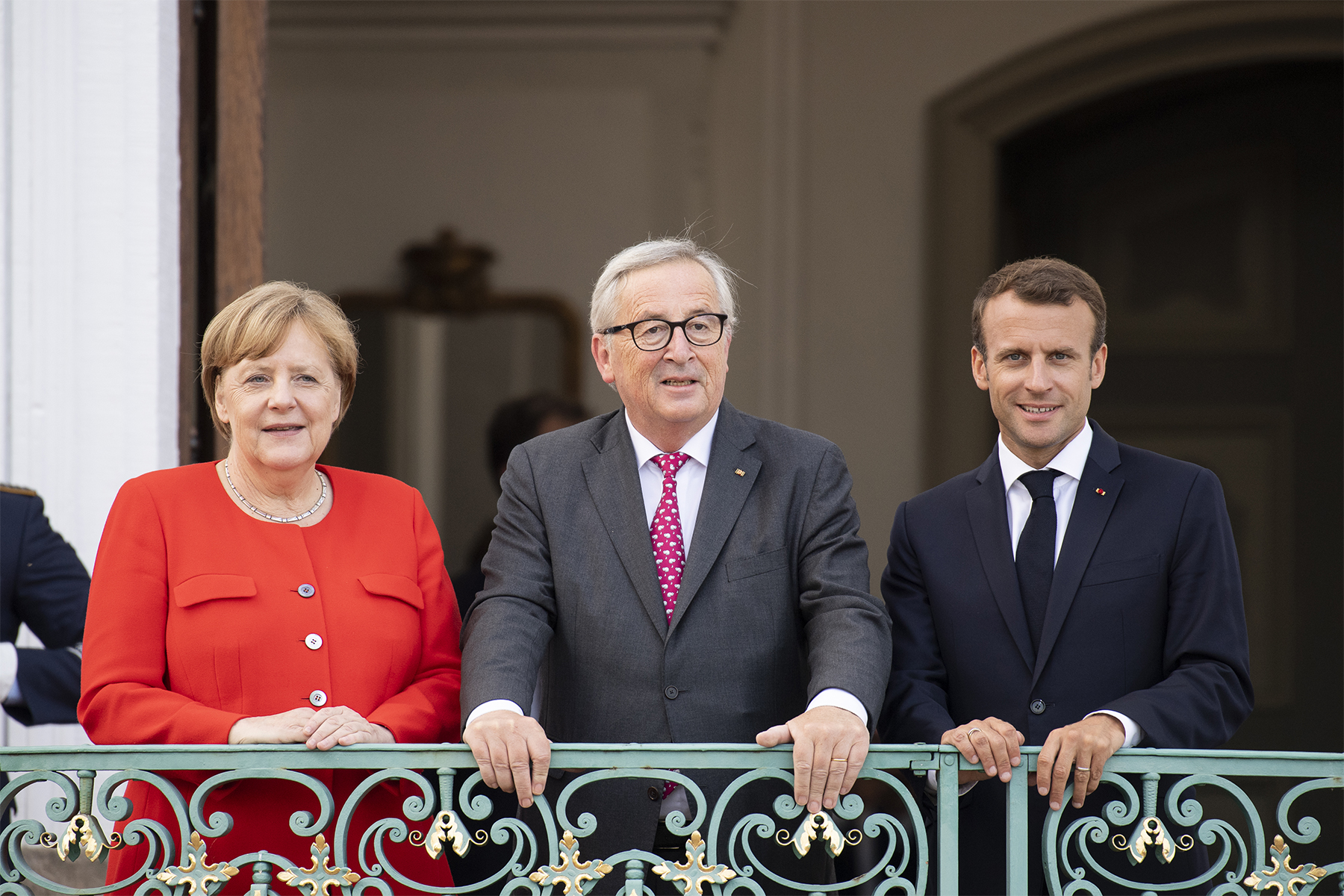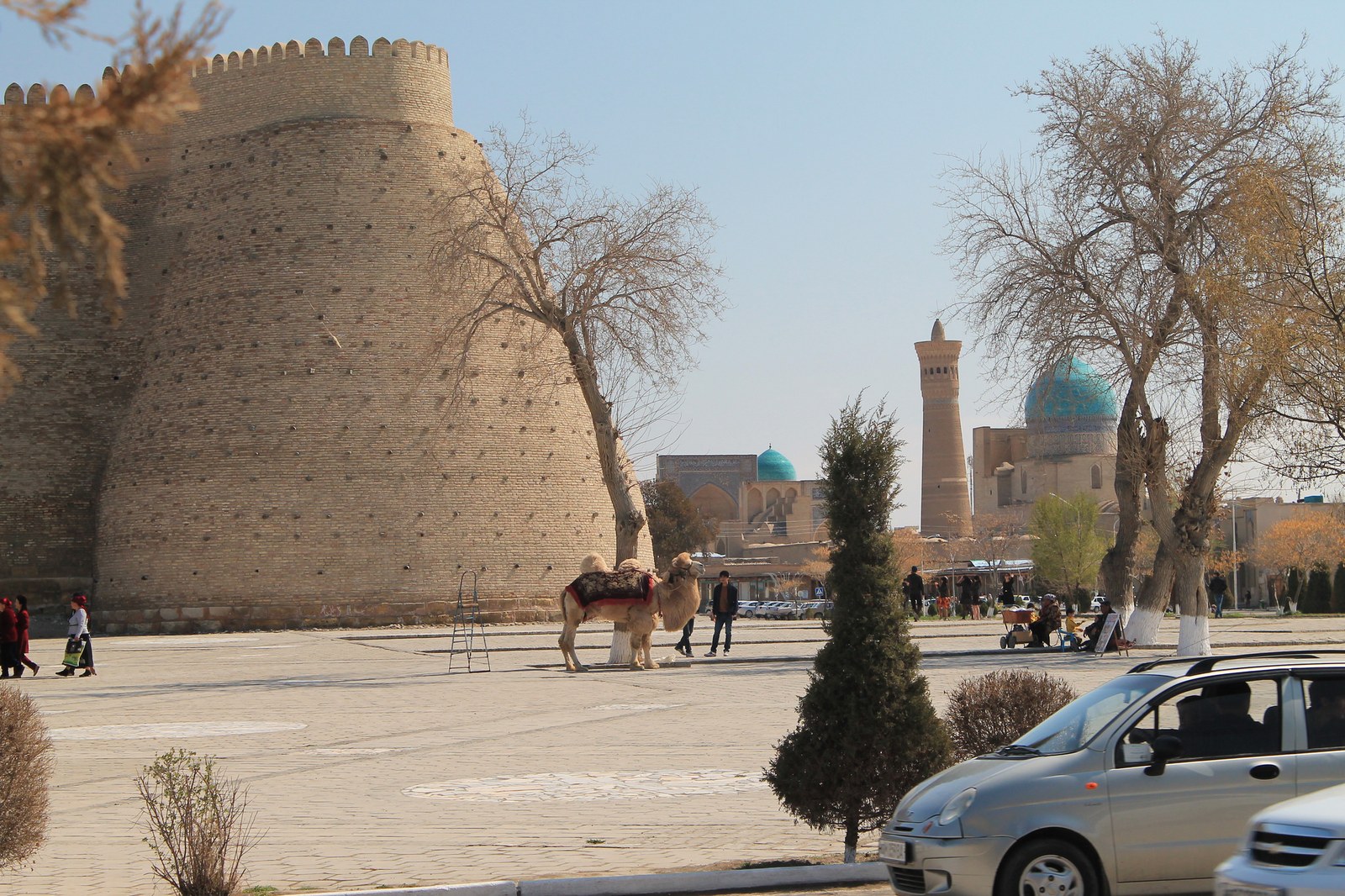The ongoing crisis in relations between Russia and the EU is usually linked to dramatic events in and around Ukraine in 2013–2014. Indeed, it is impossible to imagine that the EU–Russia relationship can get back on track or “business as usual” until the Ukrainian conflict is resolved. Unfortunately, a resolution of this conflict is not likely to happen in the immediate future – many argue that we will have to live with this bleeding wound in the center of our common continent for at least a couple of years, if not a couple of decades.
However, imagine for a second that a miracle happens, and the Ukrainian problem is off the table. Would it open a way for a common understanding of the European future and for a consorted EU–Russia effort at building a shared Greater Europe? Most likely, it would not. The Ukrainian conflict, as important as it is, should not overshadow more fundamental divisions between the East and the West; these divisions are not likely to disappear any time soon.
Diverging visions of the European future
Even during the honeymoon of the Russian-EU cooperation in early 2000s Moscow was not ready to subscribe to a vision of Greater Europe based on a compete or a partial unilateral acceptance of EU norms, rules standards, and procedures by all other states of the European continent. It would require a stretch of imagination to envisage that Moscow can subscribe to this vision today, when the EU is struggling with multiple crises, and the future of the European project looks much less optimistic than some fifteen – twenty years ago. In the eyes of the Russian political establishment, the European project has lost a large part of its credibility. Moreover, since the Russia-EU honeymoon the global center of economic and technological development has shifted further from the Atlantic to the Pacific region, thus opening to Moscow – at least, in theory – attractive alternative integration options.
The Russian concept of Greater Europe has always been different. Moscow approaches the European future as a joint venture between the EU and the Eurasian Economic Union (EAEU). In this joint venture, each of the shareholders has the same rights and the previous positive EU–Russia experience (such as sector and visa dialogues, trans-border cooperation, humanitarian contacts, etc.) is carefully preserved and developed further. Such a vision evokes no enthusiasm in EU. First, many in Brussels simply do not perceive the EAEU as a “real” integration project comparable to the EU – even the EU of 1960s or 1970s. The EU conventional wisdom regards this initiative as stillborn and assumes that most of the current EAEU members would gladly trade their membership in this institution for closer links with EU, if they had such a choice. Moscow is implicitly or explicitly accused of arm-twisting and using various kinds of political leverage to drag reluctant post-Soviet states into EAEU.
More importantly, the EU is not well equipped for and does not have a lot of experience in conducting negotiations based on equality – even with such powerful partners as China or the United States. The traditional EU strategy has always been in the geographical expansion of its standards, rules and norms, not in adjusting these standards, rules and norms to the changing international environment. The assumed universalism of EU norms has always been a cornerstone of the European idea – the subject of negotiations with external partners has been not about a mutually acceptable compromise, but rather about how fast and how consistent these partners can be in adopting the EU normative framework.
These diverging visions of the European future are not likely to be reconciled anytime soon, even if the Ukrainian crisis is resolved. In the beginning of 2000s, the two sides tried hard to hide their fundamental disagreements behind general and ambiguous slogans, to cover the gap in perceptions by far-reaching, but shallow concepts (“four spaces of cooperation”, “roadmaps”, etc.). The cold post-Ukraine reality makes this hypocrisy no longer possible. One can argue that the current EU–Russian relations manifest a balance of mutual weakness. Brussels does not have enough convincing arguments to make Moscow accept the vision of an “EU-centered” Europe and to make Russia pay the ‘fair’ price for getting back to early 2000s. Moscow, even together with other EAEU member states, does not have enough power to engage Brussels into a substantive dialogue of peers. Both Brussels and Moscow apparently believe that time is playing on their side, but the recent global economic and political dynamics puts these beliefs into question.
Why Russia’s tilt towards Asia will continue
It might sound counterintuitive, but the only plausible way for Russia to get back to Europe today goes through Asia. If Moscow cannot engage EU in a peer dialogue alone or through EAEU, it has to join a more powerful coalition, which will have more leverage in dealing with Brussels. In other words, the concept of Greater Europe should become and is already becoming for Russia a part of a larger Greater Eurasia concept. The idea of Russia’s pivot to Asia has a long history; they tried to implement it in various periods of history and in several different formats. The results have been mixed; in sum, despite a number of success stories, Russia has not yet become a full-fledged member of the emerging Asia Pacific community of nations.
One of the problems with Russia’s current approaches to Asia is a deeply rooted perception that the Asian pivot is a realistic substitute to the needed economic, social and political modernization of the country. Allegedly, cooperation with Asian partners – from China and South Korea to India and Malaysia – does not set the same demands on the quality of governance, diversification of economy, investment into human capital and innovation, fight against corruption, as cooperation with EU partners did. In reality, these demands are even higher in Asia than in Europe since the Asian continent is mode dynamic, competition in Asian markets is tougher, multilateralism here is less developed and the overall economic practices are not merciful to those lagging behind.
At the same time, Russian starting positions here are much weaker than in Europe. In Asia, they still perceive Moscow mostly as an external player. There are no major Russian Diasporas in the region, economic and social infrastructure in the Asian part of the country is much less developed than in the European part, there are deep cultural gaps between Russians and Asian nations, and so on. Recent progress in the bilateral trade with China, in reaching out to new Asian partners, in institutional development of SCO and BRICS should not conceal multiple unresolved problems that slow down Russia’s progress in becoming a truly Asian- Pacific nation.
Then, why Asia and not Europe? The Eurasian project today has at least two major comparative advantages for Moscow over the European one. First, though Russia’s interactions with many Asian countries are complicated and not always easy, but there is no such a long tail of negative memories, mutual grievances, complaints, prejudices and stereotypes, which are characteristic of Russia’s relations with most of its Western neighbors. Major Asian countries do not perceive Russia as an existential threat or a challenge, but rather as a potential opportunity. For instance, the Ukrainian conflict clearly generates fewer emotions in Asia than in Europe. Most of Asian nations do not support Russia’s actions in Ukraine, but they do not perceive these actions as an existential threat to any ‘Asian order’. Second, the Eurasian project, unlike the European project, is still in the very early stage of its implementation. It has not yet produced any rigid rules of the game, thick layers of bureaucracies, established traditions present in Europe. Moreover, most of the ‘Eurasian’ initiatives – like One Belt One Road (OBOR), BRIS+ – remain deliberately vague and ambiguous to reduce initial entrance costs for potential partners and members. This is a very different approach compared to a very rigid and uncompromising institutional framework of EU. Therefore, it is easier for Russia to plug itself into emerging Asian mechanisms and regimes – not as a latecomer, but as one of the founding fathers and in some cases as one of the leaders.
This is not to say that the European project is of no significance to Russia. Quite the opposite is true. The most important comparative advantage of Moscow in Asia is exactly Russia’s “European” nature. Only by articulating this nature can Russia become a valuable building block in the new Greater Eurasia. It this sense, a successful Russia in Asia can be compared to Australia or New Zealand – the two countries are so well integrated into Asian economic production chains largely exactly because they are so different from all other Asian states. Therefore, for Moscow it is crucially important to maintain and to expand its historic human, cultural, educational and other ties to Russia’s European cradle.
Mogherini‘s “five principles” as a template for Russia’s policy towards EU
In March of 2016 the foreign ministers of the EU member states agreed on five principles in the bloc’s relations with Russia outlined by EU foreign policy chief Federica Mogherini. These principles included the following: (1) push for the full implementation of the Minsk ceasefire agreement in eastern Ukraine; (2) bolstering EU ties with its eastern partners – former Soviet republics in Eastern Europe, South Caucasus and Central Asia; (3) strengthening the EU’s institutional and political resilience; (4) maintaining exclusively EU interests in any kind of selective engagement with Russia; (5) engaging in people-to-people contacts and supporting civil society in Russia.
Later EU scholars and politicians often suggested that Russia should come up with its own list of principles guiding Moscow’s policies towards Brussels. If there is no ambitious goal to come to a shared vision of Greater Europe anytime soon, the principles of Federica Mogherini with some minor modifications look good enough to shape Russia’s approaches to the EU. Some would say that these principles lack imagination and ambition, but their implementation can at least stabilize the relationship at an acceptable level. Let us go along the Mogherini’s list.
— Full implementation of the Minsk Agreements. Moscow has a vital interest in implementing the Agreements. Not because the EU wants it, but because an unfrozen low-intensity military conflict along the Russian border and the chronic political, social and economic instability in East Ukraine are clearly detrimental to Russia’s national security. The Kremlin could and should demonstrate more flexibility in matters related to modalities of a UN peacekeeping operation in Donbas. At the same time, it should urge the EU participants to the Normandy process to exercise appropriate influence on their partners in Kyiv. Even if the Donbas settlement is likely to be delayed due to the election cycle in Ukraine, this does not mean that in Moscow they should sit on their hands waiting for political dust to settle down in Kyiv. Russia should bolster its own ties with neighboring post-Soviet states demonstrating more sensitivity to their problems and challenges. In some cases, Moscow can coordinate its efforts with Brussels, in other cases it will have to compete with the latter. Though closer cooperation with the EU might still look as the preferred option to many nations in the common neighborhood, the reality is that any geographical enlargement of the Union to the East seems to be off the table for a long time. Furthermore, financial resources that Brussels is ready to allocate to its Eastern partners, will be constrained by many other competing demands on the EU budget. This creates a window of opportunity for Russia and EAEU to proceed with their integration initiatives. It goes without saying that any closer economic cooperation with countries of the neighborhood will require serious efforts at modernizing the Russian economy and society.
— EU might face a challenge of its institutional fragility, but for Moscow, this challenge is much more fundamental. Institutions in Russia have always been weak and this weakness is still there, after almost twenty years of building the ‘vertical of power’. Among other things, weak institutions limit Russia’s ability to pursue a truly multitrack dialogue with the EU – including substantive parliamentary discussions, interaction between political parties, interregional communication, and so on. Stronger institutions would also make the Kremlin less paranoid about the West trying to initiate a ‘color revolution’ in Russia by supporting political opposition, civil society organizations or independent media inside the country.
— Brussels is interested in a selective engagement with Moscow on matters of interest to the EU, but so it Moscow. On a number of important international problems – like the Iranian nuclear dossier or the Israeli- Palestinian conflict – Russian and EU positions converge rather then diverge. The question is identify specific issues where a closer Russia- EU cooperation would make a difference. For instance, a European role in the resolution of the North Korean nuclear problem is not likely to be particularly active, but EU might be the major player in a future Middle East economic and social transformation. Moscow and Brussels could upgrade the level of their contacts on such issues as international migrations and terrorism, cyber-crimes and food security. Selective engagement will not produce miracles, but it can balance the overall relationship and make a practical, albeit a modest contribution to global commons. In case of even limited success, the sides can move ahead to more sensitive and more controversial international problems.
— People-to-people contacts with Europe, including civil society, culture, education and research should be a priority not only for Brussels, but for Moscow as well. Russia and EU might disagree on what ‘civil society’ cooperation actually means and who is qualified to represent civil society on the Russian side. However, these disagreements are not irreconcilable provided there is political will and flexibility on both sides. Cooperation in culture, education and research as well as crossborder collaboration look even less toxic or controversial; both Russia and the EU will definitely gain from it. It is in Moscow’s interests to diversify links to Europe, even if such diversification might contain certain political risks.
As for the likely longer-term future of the EU–Russia relations, it depends mostly of the future of the EU itself in some five – ten years from now, when Russia enters its new, post-Putin political cycle. Ideally, the question of ‘getting back to Europe’ by that time should sound irrelevant. It should be replaced by a different, more practical question about how Moscow and Brussels can collaborate in the framework of emerging Greater Eurasia. One should not forget that, in the end of the day, Europe, even together with the European part of Russia, is only a large peninsula in the Western corner of the huge Asian landmass.
First published in Riga Dialogue Afterthoughts 2018







